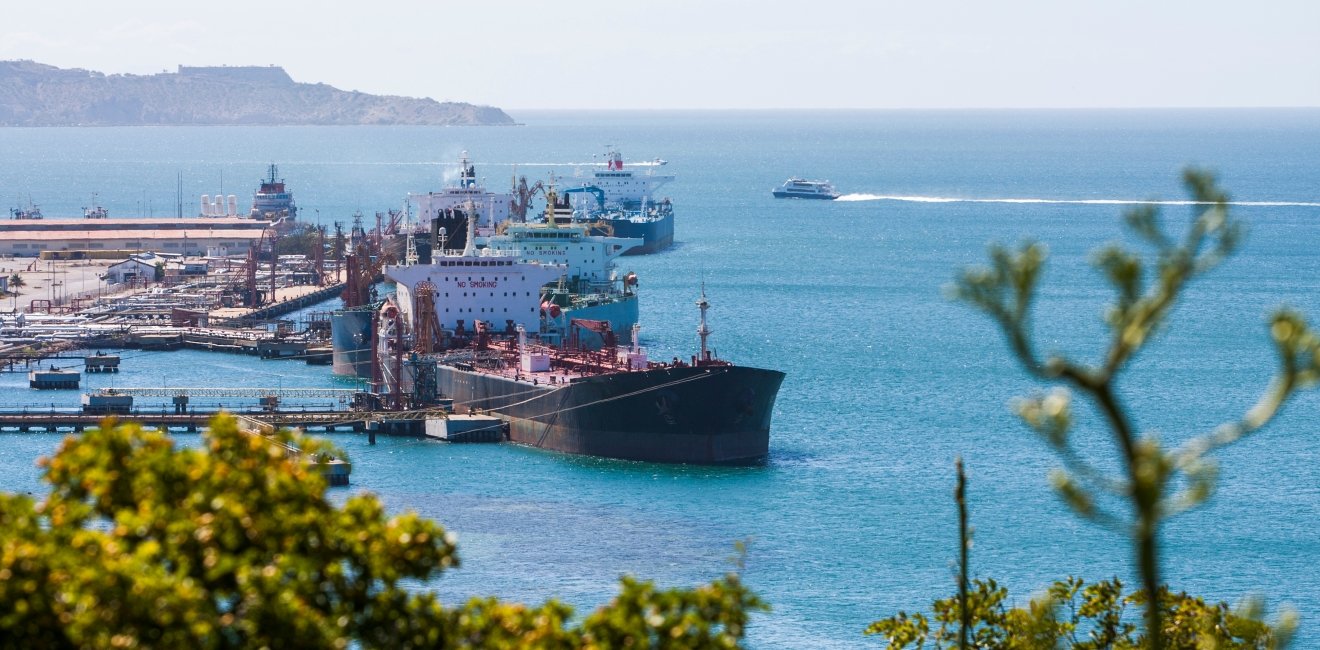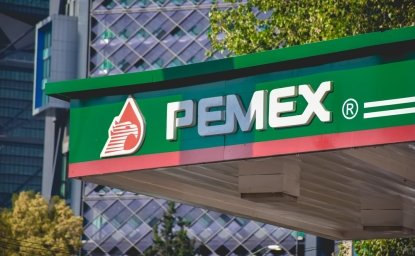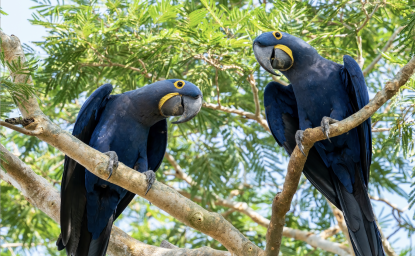The United States’ mounting sanctions against Venezuela, especially on the national oil company PDVSA, have had a profound effect on the Andean nation’s oil exports to far-flung India. However, despite numerous news reports apparently confirming the halting of Venezuela’s oil exports to India,[i] oil continues to flow from Venezuela to India, albeit in smaller quantities. As per Reuters’ calculations, India’s imports dropped considerably following the imposition of U.S. oil sanctions in January 2019, going down to 200,000 barrels per day (bpd) in June 2019,[ii] just half the oil India imported on average from Venezuela in 2018.[iii]
This is more than just an inconvenience for Nicolás Maduro’s regime in Venezuela: India accounted for 28 percent of Venezuela’s crude oil exports in 2018, amounting to revenues of $7.39 billion.[iv] More importantly, Venezuela relied on India as a vital source of foreign exchange, given that a sizeable share of Venezuela’s exports to China goes towards repaying over $60 billion in loans.[v]
While the imposition of sanctions against PDVSA remains the primary reason for this rapid reduction in imports, bilateral diplomacy conducted by the U.S. government has also helped persuade India. The U.S. Special Representative for Venezuela, Elliott Abrams, recently admitted at a press conference, “I would say that we have had contacts with Indian companies and with the Government of India and that we have found there to be a very considerable amount of cooperation, which we are very happy to see.”[vi]
The India-Venezuela Oil Trade
At the center of India-Venezuela trade is Reliance Industries Limited (RIL), accounting for 80 percent of India’s annual oil imports from Venezuela. Due to RIL’s sheer size and diversified portfolio—it is India’s largest company by market capitalization and revenue—the company is deeply integrated with the U.S. market, through joint ventures in shale gas blocks in Texas and Pennsylvania with Chevron and Pioneer Natural Resources and millions of dollars’ worth of exports from India to the United States.
Naturally, due to these important business interests, RIL promptly decided to comply with U.S. sanctions against Venezuela, and has so far taken three steps to ensure compliance. First, it immediately stopped exports of diluents such as alkylate and naphtha from its Houston-based subsidiary to Venezuela once sanctions were announced. Second, RIL has been gradually decreasing its imports from Venezuela, despite having signed long-term contracts with PDVSA that last until 2027. Finally, RIL resumed lobbying activities in the United States after a six-year hiatus, to ensure full compliance with the U.S. sanctions. Public documents filed by the company reveal that RIL contracted a lobbying firm, Eversheds Sutherland (US) LLP, on February 15, 2019, for assistance on the issue of “U.S. economic trade sanctions policies.”[vii]
Besides RIL, the only other Indian company that buys Venezuelan oil is Nayara Energy, previously Essar Oil, now owned by Russia’s Rosneft. These rather new owners, and the Maduro regime’s growing political alliance with Russia, bring a different angle to the India-Venezuela oil trade.
Today, Rosneft operates in each step of the oil sector’s value chain in Venezuela: from local production in Venezuelan oil fields to the export of crude oil. A portion of the oil co-produced by Rosneft and PDVSA in Venezuela is shipped to India’s Nayara Energy. In 2018, this amounted to 69,200 bpd of oil exported from Venezuela to the Vadinar port in Gujarat.[viii] But these numbers are declining fast, as millions of barrels of oil remain stranded off the coast of Venezuela, waiting for approvals and oil transfer payments.[ix]
While Nayara Energy, in its earlier incarnation as Essar Oil, used to pay cash for Venezuelan oil, the new Russian owners have altered this dynamic: Rosneft loaned over $6 billion to PDVSA over the past few years, the bulk of which has gradually been repaid in Venezuelan oil. Today, Nayara’s imports of Venezuelan crude come under the purview of Rosneft’s oil-for-loan deals, thus decreasing the amount of cash Venezuela receives from India for oil imports.
Apart from the effects of U.S. sanctions, Venezuela’s rapid decline in oil production itself has also contributed to a decrease in its exports. Most estimates put production levels at 720,000 bpd in May 2019, far below the 2.3 million bpd produced in 2015.[x] The Indovenezolana joint venture between PDVSA and India’s ONGC Videsh Limited (OVL), which was expected to reach a capacity of 40,000 bpd, now produces only 9,900 bpd of oil.[xi] This is bound to cause more concern for OVL, to which PDVSA already owes $449 million worth of accrued dividends.[xii]
Looking Ahead
These commercial exchanges make up the entirety of India-Venezuela relations in the short term, as New Delhi has paid little attention to the geopolitics being played out in Caracas. As a result, the Maduro regime has grown more distant towards India and even more dependent on Russia and China.
While Venezuela exported more oil to India than to China in 2018, this equation has changed considerably in the aftermath of U.S. sanctions: in May 2019, oil exports to China stood at 450,000 bpd, more than double the exports to India.[xiii] Russia’s Rosneft is today one of the largest recipients of Venezuelan oil and ships it to Europe and Asia, including India.
As the geopolitical scales tip, the domestic situation in Venezuela shows no signs of improvement. Recent economic figures released by the IMF, showing that GDP contracted by 25 percent in 2018,[xiv] reconfirm the gravity of the crisis. According to the United Nations High Commissioner for Refugees, 4 million people have already fled the country as of June 2019, and this could reach up to 8 million, or one-quarter of the entire population.[xv] It is by no means an exaggeration that economists term Venezuela’s predicament as “the single largest economic collapse outside of war in at least 45 years.”[xvi]
Hari Seshasayee is a Latin America analyst specializing in India-Latin America relations. He has an M.A. in Latin American Studies from Stanford University, and has previously worked as a researcher with Gateway House, a Mumbai-based foreign policy think tank, and also led the Latin America desk at the Confederation of Indian Industry. He tweets at @haricito and can also be reached at harisesh@alumni.stanford.edu
[i] Nailia Bagirova, “Venezuela suspends oil exports to India - Azeri energy ministry,” Reuters, March 19, 2019. https://uk.reuters.com/article/venezuela-oil-india-russia/update-1-venezuela-suspends-oil-exports-to-india-azeri-energy-ministry-idUKL8N2161Q8.
[ii] Marianna Parraga, “Venezuela's June oil exports recover to over 1 million bpd: data,” Reuters, July 2, 2019. https://www.reuters.com/article/us-venezuela-oil-exports/venezuelas-june-oil-exports-recover-to-over-1-million-bpd-data-idUSKCN1TX1MH.
[iii] Calculations based on International Trade Centre (ITC), Trade Map, https://www.trademap.org.
[iv] Calculations based on International Trade Centre (ITC), Trade Map, https://www.trademap.org.
[v] Kevin P. Gallagher and Margaret Myers, “China-Latin America Finance Database,” Inter-American Dialogue, 2017, https://www.thedialogue.org/map_list/.
[vi] Press Trust of India, “Considerable amount of cooperation from India on Venezuela, says US,” Business Standard, March 30, 2019. https://www.business-standard.com/article/pti-stories/considerable-amount-of-cooperation-from-india-on-venezuela-us-119033000110_1.html.
[vii] Pro Publica Inc. “Lobbying for Reliance Industries Limited by Eversheds Sutherland (US) LLP,” ProPublica. Accessed on June 15, 2019: https://projects.propublica.org/represent/lobbying/r/301021144.
[viii] Collin Eaton, Marianna Parraga, and Gleb Gorodyankin. “Venezuela turns to India for oil exports as U.S. sanctions bite,” Reuters, February 13, 2019. https://ca.reuters.com/article/businessNews/idUSKCN1Q12GI.
[ix] The ships are stranded for multiple reasons, including the fact that PDVSA is unable to pay for simple but mandatory port services (hull cleaning and the like) and that some shipping companies have seized or cancelled oil shipments due to PDVSA’s rising unpaid debt.
[x] Spencer Jakab, “Oil Sanctions Reach Limits as Venezuela Is Wrung Dry,” Wall Street Journal, June 11, 2019. https://www.wsj.com/articles/oil-sanctions-reach-limits-as-venezuela-is-wrung-dry-11560270628.
[xi] Jeff Mower, “Venezuela's Orinoco Belt crude production falls to 169,800 b/d,” S&P Global Platts, May 14, 2019. https://www.spglobal.com/platts/en/market-insights/latest-news/oil/051419-venezuelas-orinoco-belt-crude-production-falls-to-169800-b-d.
[xii] PTI, “OVL declines Venezuela’s offer for additional stake in oilfield,” Financial Express, September 9, 2018, https://www.financialexpress.com/industry/ovl-declines-venezuelas-offer-for-additional-stake-inoilfield/1307239/.
[xiii] Marianna Parraga, “Venezuela's oil exports drop 17% in May as sanctions kick in: data,” Reuters, June 4, 2019. https://www.reuters.com/article/us-venezuela-oil-exports/venezuelas-oil-exports-drop-17-in-may-as-sanctions-kick-in-data-idUSKCN1T521H.
[xiv] Ryan Dube, “Venezuela’s Central Bank Releases Data on Dire Economy,” Wall Street Journal, May 28, 2019. https://www.wsj.com/articles/venezuelas-central-bank-releases-data-showing-dire-economy-11559098083.
[xv] Dany Bahar, “Chavismo is the worst of all sanctions: The evidence behind the humanitarian catastrophe in Venezuela,” The Brookings Institution, May 22, 2019. https://www.brookings.edu/blog/up-front/2019/05/22/chavismo-is-the-worst-of-all-sanctions-the-evidence-behind-the-humanitarian-catastrophe-in-venezuela/.
[xvi] Kurmanaev, A. “Venezuela’s collapse is the worst outside of war in decades, economists say,” The New York Times, May 19, 2019. https://www.nytimes.com/2019/05/17/world/americas/venezuela-economy.html.
Author

Advisor to the Foreign Minister of Panama and Asia-Latin America Expert, UNDP

Latin America Program
The Wilson Center’s prestigious Latin America Program provides non-partisan expertise to a broad community of decision makers in the United States and Latin America on critical policy issues facing the Hemisphere. The Program provides insightful and actionable research for policymakers, private sector leaders, journalists, and public intellectuals in the United States and Latin America. To bridge the gap between scholarship and policy action, it fosters new inquiry, sponsors high-level public and private meetings among multiple stakeholders, and explores policy options to improve outcomes for citizens throughout the Americas. Drawing on the Wilson Center’s strength as the nation’s key non-partisan policy forum, the Program serves as a trusted source of analysis and a vital point of contact between the worlds of scholarship and action. Read more





